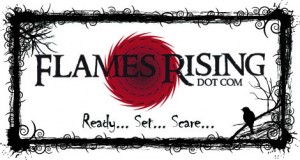 I know that many of you might be writing for National Novel Writing Month, and if you are – I hope that it’s going really well for you. Writing 50,000 words in a month is not an easy task, and it can be very exhausting. I knew that my schedule for November wasn’t going to allow for NaNoWriMo, so I wasn’t able to participate. Admittedly, I feel a little guilty about not making a concerted effort on my writing this month, even though I’m waiting to hear back on several projects.
I know that many of you might be writing for National Novel Writing Month, and if you are – I hope that it’s going really well for you. Writing 50,000 words in a month is not an easy task, and it can be very exhausting. I knew that my schedule for November wasn’t going to allow for NaNoWriMo, so I wasn’t able to participate. Admittedly, I feel a little guilty about not making a concerted effort on my writing this month, even though I’m waiting to hear back on several projects.
So, in the interest of “getting back into it” I propose a December Writing Marathon for 20,000 words minimum. The reason why I’m suggesting a smaller word count, is because I know that that “goal” is achievable, even during one of my busier months. Before I invite you to participate, I’d like to propose some rules for this Marathon, in the hopes that you’ll be inspired to get some writing done, too! Remember, if you want to chase the rainbow, you need to put your running shoes on first!
- 1. Determine What Your Personal Goal Is – Do you know what it is you want to write? Whether you’re writing for a game, a novel or four short stories of 5,000 words each, before any of us starts writing for this Marathon, we should probably figure out what we want to write.
- 2. Post Your Personal Goal On Your Blog – Once you have your writing goal figured out, why not add some content to your blog and write about what you’d like to work on? After you do, feel free to shoot me the link by posting a comment and I’ll collect everyone’s goals.
- 3. You Must Write Every Day Or You’ll… – In order for this to be a true “marathon,” I propose that we sit down once-a-day and write something, even if we’re blowing past the 20,000 word count goal. If we don’t sit down and write, we think of a personal activity that we’ll have to do instead. For example, if I don’t sit down and write each day, I’ll have to spend a half an hour going through paperwork or I’ll have to tack on an extra workout.
- 4. At the End of Every Week, We’ll Revisit our Writing Goals – Instead of summing up where we are every day, I recommend concentrating on the writing and then revisiting the word count on a weekly basis. Like we did with our writing goals, we could simply sum up where we’re at with the marathon by writing up a short blog post.
- 5. If Some of Us Don’t Hit Goal by December 31st, We Keep Going Until We Do – The key with a marathon, for me, is not to worry about the best time but to focus on finishing. Yes, I believe 20,000 words in a month is very achievable, but for some of you it may still seem pretty daunting.
- 6. We Avoid Talking “About” Writing, Game Design or Publishing – This is a tough one, but this rule comes from something I’ve noticed. Talking about writing or editing doesn’t help you get the words down on the page. In fact, it can be a huge distraction. December is one of those months where there will be enough distractions, especially if you’re celebrating the holidays. I propose we try to minimize talking about writing while we’re on the Marathon.
- 7. At the End of the Marathon, We Write our 2010 Writing Goals – If you’ve never written this many words in a month before, this exercise can help you understand whether or not you’re interested in writing professionally. For me, I plan on focusing on a couple of speculative projects, and I hope that the marathon will help me shape my fiction writing goals. By the time the Marathon concludes, I believe we should all have a pretty good idea of what we want to do next.
So those are some simple rules that I’d like to offer for the Marathon. If you’re interested on providing feedback, feel free to take a look at these rules for the December Writing Marathon and tell me what you think. After I get some feedback from you, I can post more “official” rules before December begins along with some helpful tools.
Photo Attribution


 Earlier I talked about the concept of
Earlier I talked about the concept of